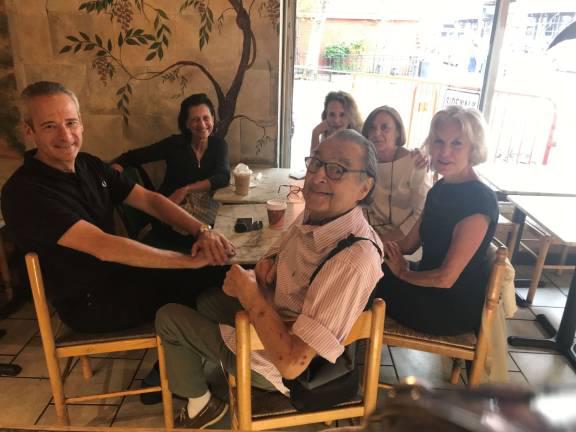Farewell to Sandro Manzo
Remembering a gallery owner from Rome who made the Upper East Side home

He cut a rather dashing figure. Strolling the streets near his home on 91st and Park, Sandro Manzo typically dressed in casual slacks and bright colored sweaters. Who would know that this soft-spoken man of Italian descent lived a rather remarkable life, filled with famous names, (though he had to be persuaded to drop them) impacting the world of artists in this country as well as his native one?
Manzo died last week of heart failure at the age of 81.
Manzo became a U.S. citizen about four years ago, after owning a home on the UES for some 30 years. He faced, and for years conquered, health challenges: “I have broken bones and got a new valve,” he told me. He and his wife, Fiamma Arditi, also own an apartment in Rome, the city where he ran a gallery, Il Gabbiano, for more than 45 years.
That gallery became the place to be, not only for those whose work he exhibited (some 200 shows of artists of all nationalities), but for film directors, writers, philosophers, and politicos.
There he did an exhibit he did for then-upcoming artist Robert Rauschenberg in the late 80s. “They had to close down the street,” recalled Manzo, “because there was so much excitement about the show. Rauschenberg was so nervous, he hid in the bathroom. Years later, when there was something for him here in New York, and no one could find him, I said ‘try the men’s room.’” Over the years, gallery-goers included cinematic figures like Bertolucci, Antonioni, Visconti, and actors, including Audrey Hepburn. “She was exactly the way she seemed, “said Manzo, “sweet, kind with a rather lost air about her.”
Such recollections fill the autobiography he wrote with his wife. “The book is a breezy read about a boy from Naples who follows his heart and lands smack in the middle of the art world, at a time when Rome was an intellectual and creative capital,” says Patrick Smalley, an East Side neighbor.
True Neighborhood Community
Smalley met Manzo at Juliano’s, a far-from-glamorous coffee house on 91st Street. It has become a true neighborhood community (and where I first met Manzo), and the ambience was exactly what he was seeking. “Especially when my gallery closed, I wanted some place where people just sat around and discussed issues and their lives,” he said.
All who met this man loved him. “Though we hadn’t known Sandro and Fiamma a long time, they were those unique and special people that make you feel as though you have,” says neighbor Margo Sinclair. Film producer Caroline Baron, (“Bel Canto”) says, “he was the most lovely, beautiful, generous man who has never lost his curiosity.” Adds Baron’s husband, Anthony Weintraub, “Sandro loved the good things in life but more than that, he loved to share them. Sandro was a famous gallerista, a passionate voice for artists with a discerning eye and a salesman’s gusto.”
Manzo’s work in the art world was greatly reduced in the last few years, mostly managing the career of close friend, the successful painter Mel Bochner.
“I fell completely in love with New York, and this neighborhood, when I first came here all those decades ago,” Manzo told me “Then, when we decided to make this our main home, I realized that I was different but New York was the same.”
Many would say the opposite: New York is different but Sandro Manzo, fortunately, stayed the same. He will be missed.
“I fell completely in love with New York, and this neighborhood, when I first came here all those decades ago.” Sandro Manzo